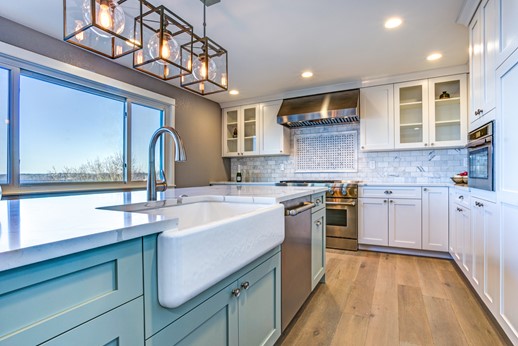Home Staging for Real-Life Sellers
by Joya Fields, Occupied Consultation Specialist™, Home Staging

The objective of home staging is to help potential buyers imagine themselves living there. It’s not about making a house pretty, it’s about making it marketable. That means compelling photos on the listing and a great impression when potential buyers arrive. This is possible even with a seller’s current belongings.
Often, pre-packing (don’t say declutter, to them it’s their belongings, not clutter) is the beginning of the project. Less is more. Donate items, give to friends, sell, or start packing. When looking at a room, the more times a buyer’s eye stops to look at something, the smaller the room feels. Sellers can often use their furniture and rearrange what they already have. A recliner can be moved from the living room to an office, or a rug can be removed to show off great floors.
Sellers are stressed. Having a “to-do” list and a way to prioritize their tasks makes the process easier. One of the key benefits of working with an Occupied Consultant Specialist is their ability to explain the rationale behind why certain rooms should look a certain way. By understanding the principles of staging and what potential buyers are looking for, sellers can better grasp the importance of presenting their homes in the best possible light.
Taking stress out of the sale process will garner happy clients and it will make you feel good about helping them. Great photos are also an excellent way for real estate agents to elevate their brand too—having awesome photos that showcase the listings you’ve handled is good for future business.
Quick Occupied Staging Tips:
- Not enough storage in the house and no garage/attic?
Secondary bedrooms aren’t as essential to buyers as the “big five” rooms. Use one bedroom as a packing room and stack boxes, bins, treadmills, etc. in it. - Make the primary closet look bigger!
All closets appear bigger when the floor is cleared. Sellers should keep some clothes in their closets to show how much will fit. Use suitcases, stored on an upper shelf, to tuck extra shoes/small items away. - Anything that isn’t going to be photographed can be done between photo day and the first showing.
Sellers are usually racing against the clock to get everything ready for photo day. It’s okay to leave some things like cleaning the refrigerator or paring the linen closet for after photos. - Remove area rugs.
Area rugs can chop up a room and make them look smaller. They can also be a tripping hazard. Take up small rugs from the kitchen and bathrooms. - Never hide flaws in a house.
Scratches on floors, cracks on walls, etc. should not be covered or hidden. The potential buyer will ultimately discover these imperfections and wonder what other issues are being covered up. Fix, repair, or keep the imperfect part of the fixed asset (house) visible.
On the contrary, furniture is not a fixed asset, and imperfections on worn furniture, for instance, can and should be covered. A solid throw blanket and a few nice pillows can do wonders to disguise worn spots or lessen a busy pattern on older pieces. A stack of books can be placed on a scratched dresser. - Beg, borrow, but please don’t steal.
Often, sellers only need a few things to complete the look of their home if they already have plenty of items. To make rooms stand out in photos, instead of buying pieces they don’t want or need, they can often borrow. Don’t have two matching lamps and tables for the bedside? Borrow. - Safety First.
Remind your sellers to tuck away kitchen knives, prescription medicines, and valuables. Items with identifying information are best if kept out of sight, too. If possible, store anything with private information in closets, drawers, or a safe.
